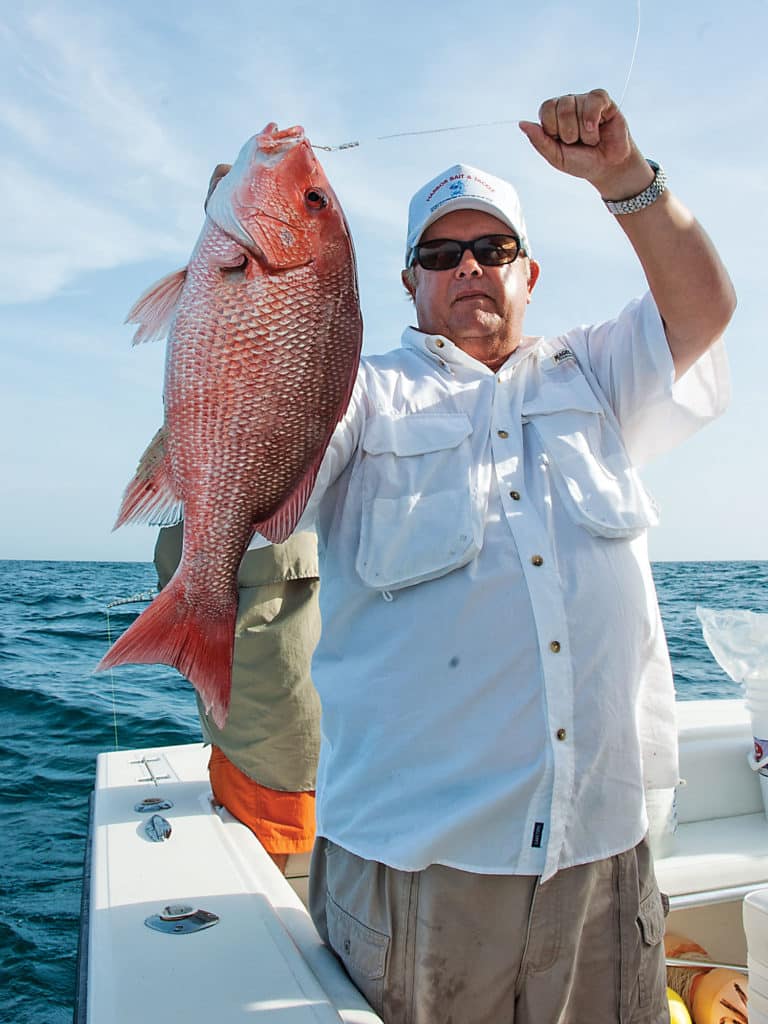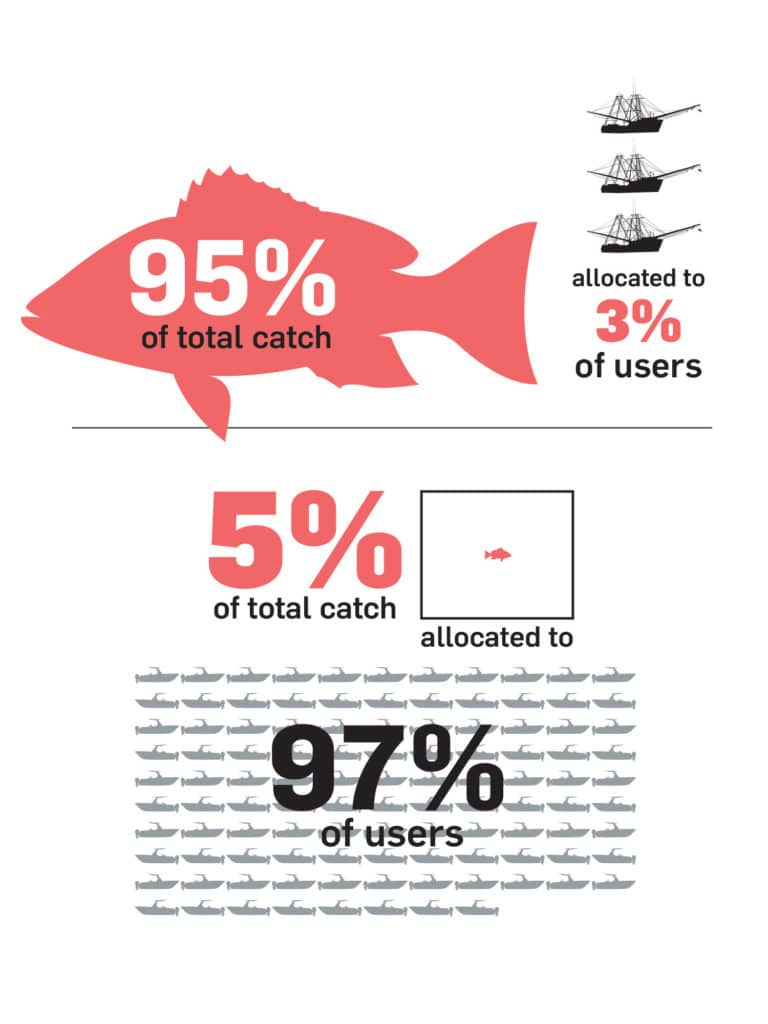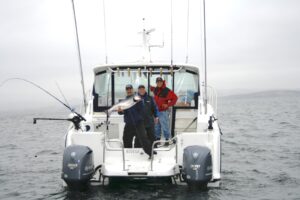
The debate rages on. Like gun rights and abortion, this discussion is not easily resolved nor may ever be.
But reading more and more about this issue makes me think we may be spending too much time focusing on catch shares while the real problem of allocation is hidden in the corner.
Trust me, I get the concern over privatization of a public-trust resource. As a member of the New England Fishery Management Council, I spent a lot of time thinking about the wisdom of supporting a catch-shares quota system for the groundfish complex in the Northeast. While at first the concept was generally supported, primarily because the old management system that allocated fishing days was a proven failure, the implementation became the problematic detail. After implementation, a majority probably did not support the concept of catch shares, but the anger against quotas was and is misdirected. What fishermen did not like was the allocation they received. However, they blamed quota shares for the problem. Due to a lack of proper planning when implementing catch caps and other controls, the industry decline was fueled by a declining resource.
Red Snapper Allocation
In the Gulf of Mexico, a lot of the same issues have happened with red snapper. However, there are some added twists for the recreational-fishing industry. The first was the “sector separation” issue, in which private anglers and the party/charter operators received separate quotas. A lot of folks blame the Gulf of Mexico Fishery Management Council for this problem, and yes, it passed this change with support from commercial users and party/charter operators. I understand why it did this. The council was trying to get its arms around the problem of over-harvest by recreational users and also give party/charter operators some ability to control their businesses. However, I do not think sector separation will work effectively or fairly in the red snapper fishery or elsewhere. All recreational users should be treated equally, not according to the platform they use to go fishing. Fair allocation would have at least mitigated some of this problem.
We know the Marine Recreational Information Program, though behind schedule, has changed how recreational-catch data is collected. It has also improved accuracy. This data is also fed into stock assessments, which tell managers how the stock is doing and how many fish can be caught. The information is not perfect, but it’s better than in the past. In some cases, this could improve the amount of fish available for recreational users. But it is not likely to get to the heart of the matter.
Commercial Fishermen Harvest Majority of Fish Species
Most allocation schemes for fish species that have recreational and commercial components have been based wholly or partly on historical catches. There is some validity to incorporating landings, but there are some other things that should also be included that have not been. First, in overall rough numbers, commercial users have caught around 97 percent of all the red snapper landed, so using just those numbers alone would always disadvantage the recreational fishermen. This figure is distorted by the fact that the overall catch includes some high-volume fisheries that have no recreational component. But even eliminating those, historical catches are heavily commercially biased. Added to that equation is the fact that recreational users have always utilized the least efficient gear.

Recreational Fishermen are Economic Powerhouses
So what should allocations be based on? Let’s look at how the user groups differ. Recreational anglers make up plus or minus 95 percent of all fishing users. Each angler catches a tiny portion of the overall landings. In a number of fisheries, the economic value generated by the recreational industry surpasses that of the commercial industry. Yet none of this is a distinct part of the allocation process. Why not have an allocation scheme that incorporates factors such as participation and economic value? Wouldn’t that be a more fair way to divide up a common-property resource? How about also looking at some demographic trends to predict increases or decreases in recreational participation farther down the road. Getting the allocation question right up front would certainly mean fewer problems later on. And yes, I know doing this will not be easy, but along with the effort to get the Magnuson-Stevens Act reauthorized, now is the time.
Without some changes to the allocation process, a lot of recreational anglers will have very limited access to some important fisheries. This will lower the potential economic value of these fisheries. More important, it will also mean that those who want to catch fish for their personal use can only access a public resource through their local supermarkets or fish stores. I don’t happen to believe that is good public policy, and it certainly does not make much economic sense.









